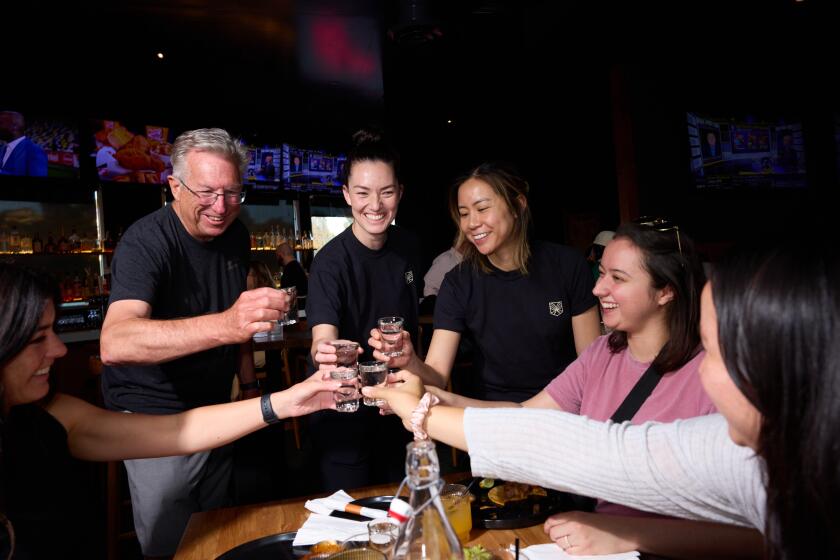A tent made of 137 jackets? Your old outdoor gear deserves a life beyond the landfill
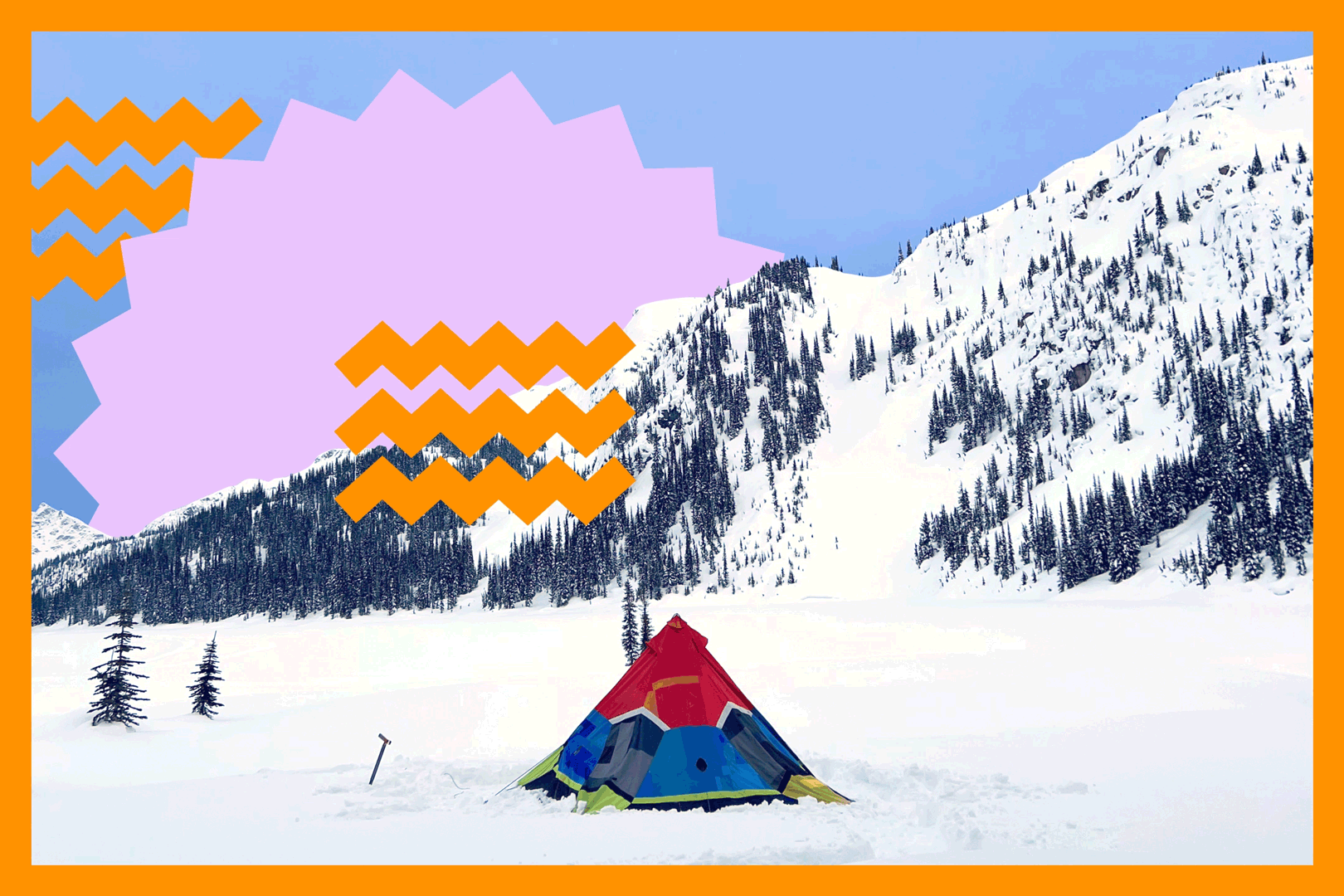
- Share via
The brightly colored tent, a patchwork of red, orange and blue, flaps in the tundra wind. For a month, professional skier Michelle Parker, 35, of Tahoe City and professional snowboarder Robin Van Gyn, 40, of Vancouver Island have been camping on a glacier in the Alaska wilderness. They’re on the slopes by day and at night find shelter from temperatures of minus 12 degrees Celsius in the tent, which was stitched from 137 Arc’teryx jackets.
The two embarked on their journey with the tent — which resembles the titular costume from the musical “Joseph and the Amazing Technicolor Dreamcoat” — in January, traveling through the U.S. and Canada as they ski and snowboard. (They’ve both been professional athletes for 20-plus years and currently represent the brand Arc’teryx.) The idea for the tent came when Parker realized it could be built “out of a bunch of landfill-bound outerwear.”
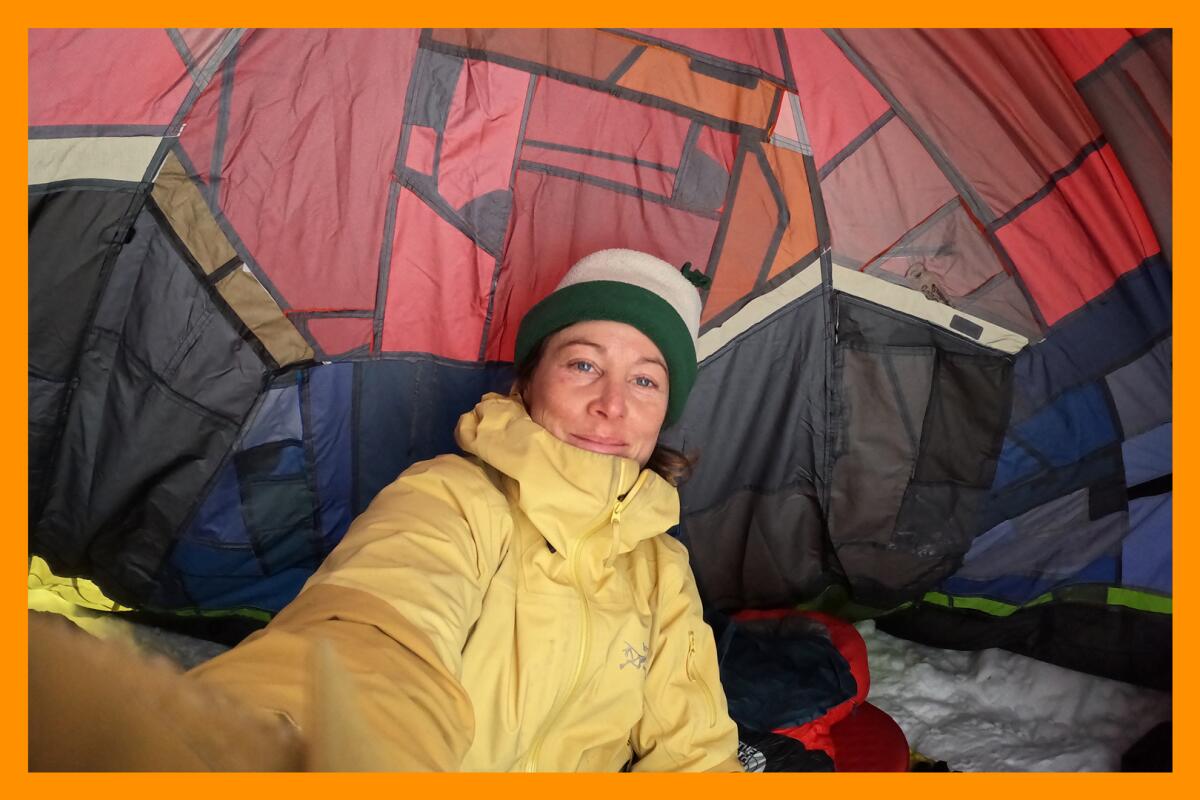
An outdoor retailer known for its high-end, insulated outerwear, Arc’teryx provided the used jackets for recycling. Parker and Van Gyn asked the expert designers and tailors at Suay Sew Shop, a post-consumer textile reuse and repair shop in Frogtown, to help them piece together the tent.
Get The Wild newsletter.
The essential weekly guide to enjoying the outdoors in Southern California. Insider tips on the best of our beaches, trails, parks, deserts, forests and mountains.
You may occasionally receive promotional content from the Los Angeles Times.
Parker, who co-hosted the series “Originate” on Red Bull TV while Van Gyn produced and directed the five-part documentary series “Fabric” on the same platform, decided to make a film about their process, including the detailed construction of the tent. The film, tentatively titled “Continuum,” also shows Parker and Van Gyn waking up in the morning, heading to the slopes and skiing and boarding complex routes, from a record-breaking season in Lake Tahoe to a thrilling spell at Mt. Baker, and on to Bella Coola, Whistler and Alaska. The film shows the lapse in time, from the rush of deep powder in the depths of winter to the pinnacle terrain of Alaska in the spring. The multicolored tent travels north with the athletes, sheltering them as it did the former owners of the 137 Arc’teryx jackets.
“Gear is a big part of Suay’s plan as we encounter an excessive amount of unrepairable garments inside the entire outdoor industry that qualify for viable life extension through upcycling,” Lindsay Medoff, founder of Suay Sew shop, says. “The tent speaks to what is possible when related to reworked gear that can actually compete with brand new products.”
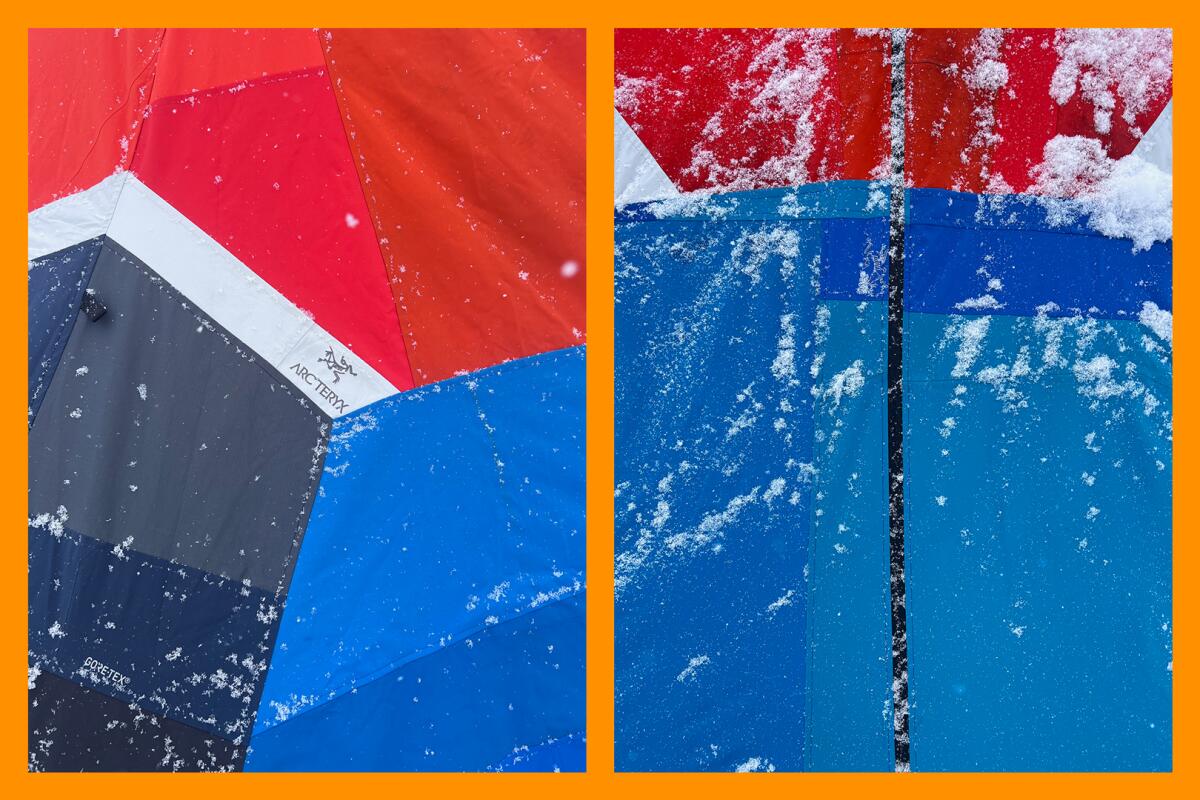
Medoff describes the tent as carefully constructed to seal out the elements, including a locking seam system with the option of an additional sealing mechanism to protect against snow and rain. It was important, she notes, that despite its advanced construction, the tent fold compactly enough to backpack with over a snow-covered mountain, as Van Gyn and Parker were mountaineering to many of their recreation sites.
“We live in such a consumer-driven society, but we’re sending a message that you can use your gear until the bitter end and not chuck it in the landfill by purchasing less and using it more,” Parker says. “Especially with a quality product like Arc’teryx, where you’re getting years and years of use out of it.”
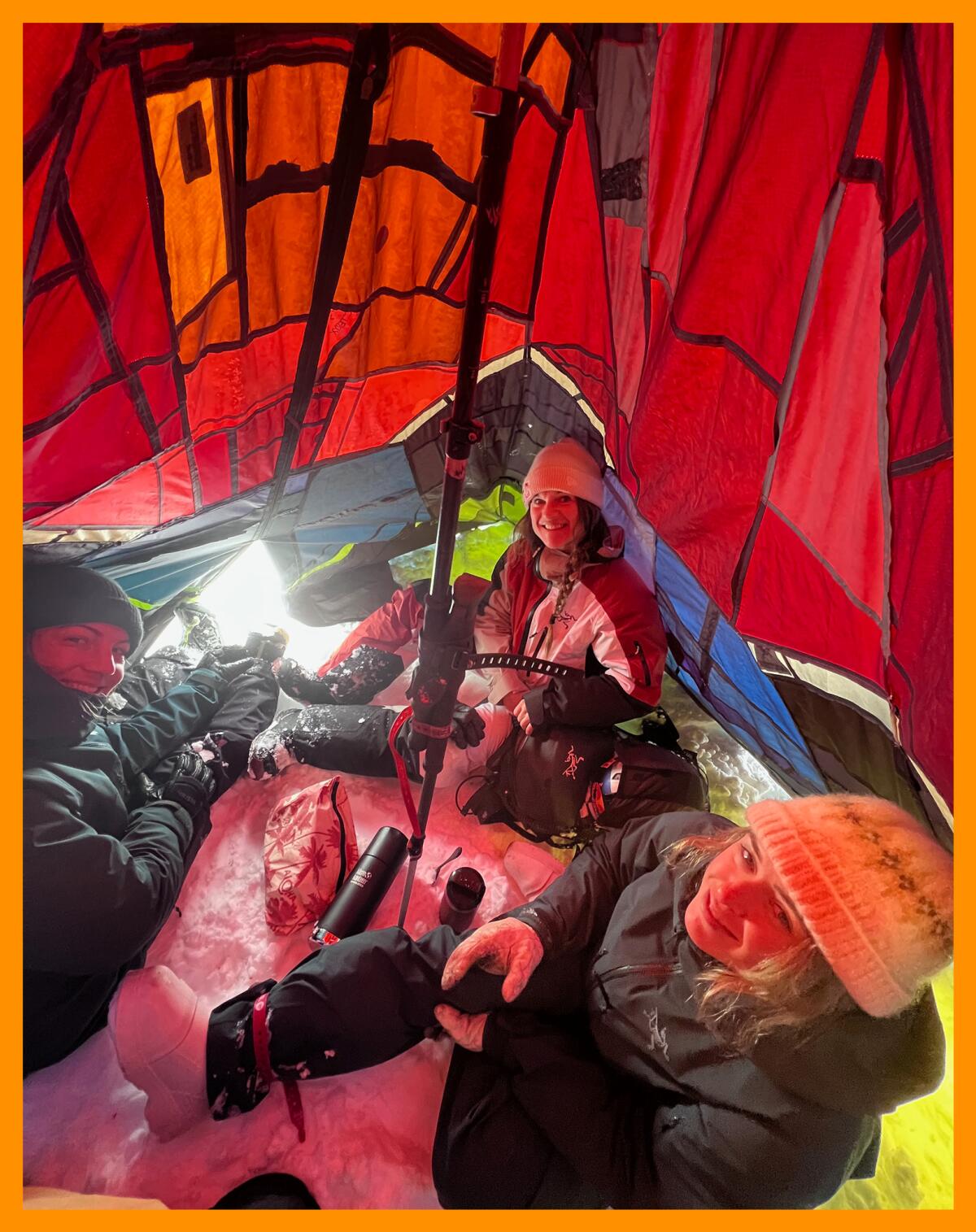
Van Gyn says she’s seen outdoor consumers move away from annual buying and trendy purchases, and toward long-lasting quality. “What we’ve seen over the last 15 to 20 years, and progressively, is really that people who buy outerwear are not buying every year based on trend, but are buying based on quality. If you have to buy new every year because your stuff is failing, that’s expensive and hard on your wallet. There’s been a big shift [with consumers] being environmentally conscious in buying decisions and examining how that affects them personally, and how that affects the global situation as well.”
The project has made a big impact on the pair, one they hope to bring to other outdoor enthusiasts with the film, which will screen at a film festival hosted by Arc’teryx in October, and then at bricks-and-mortar stores. The filmmaking duo will be on hand to chat with filmgoers on a cross-country tour discussing outdoor gear reuse and environmental stewardship. Eventually, the film will be available online for free viewing.
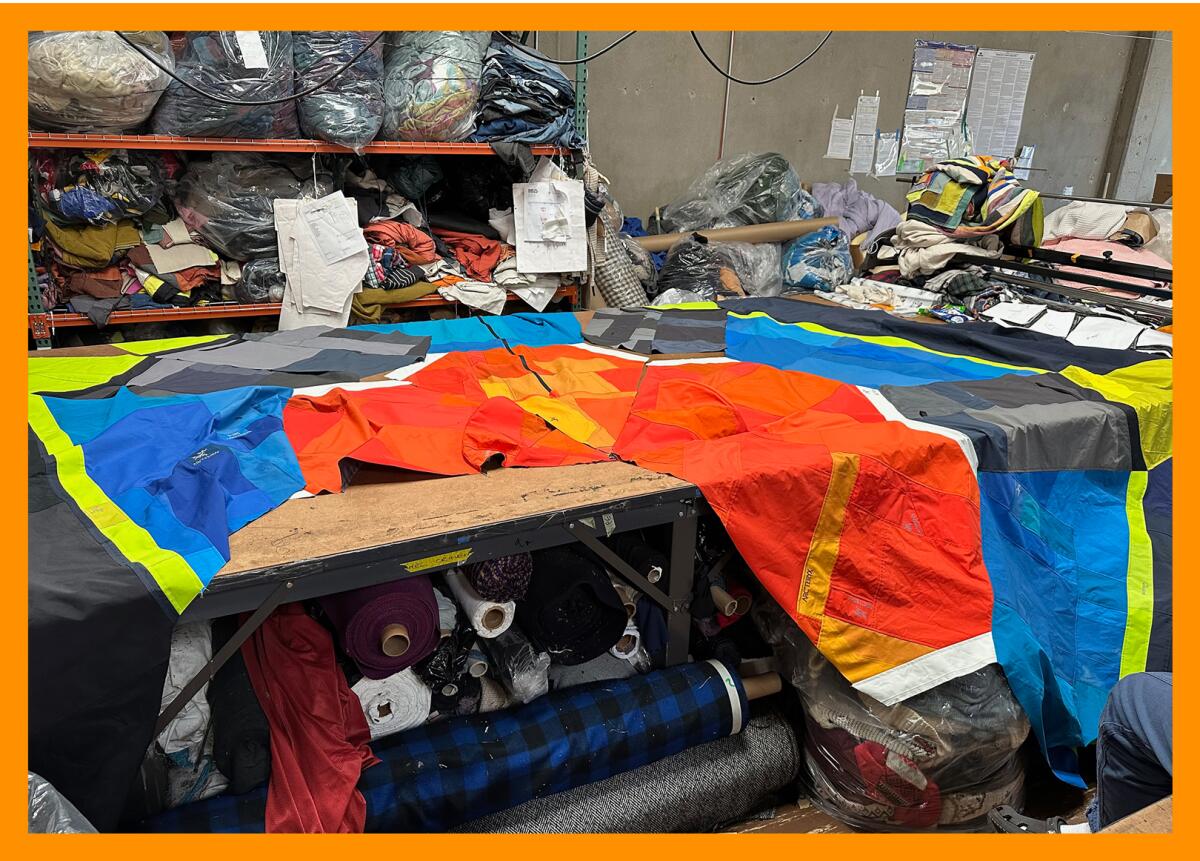
“This has been a huge eye-opener about the amount of textile waste and overconsumption in our industry,” Van Gyn says. “Since then, I’ve been obsessed with what is possible. We want to go beyond reusing and refixing, which is really gaining momentum with outerwear companies, to going out in the field and reusing and recycling in a novel, utilitarian, functional way, which is why the tent project stood out to me.”
Parker and Van Gyn are keeping their sights on the bigger picture by volunteering with Protect Our Winters, a nonprofit started by professional snowboarders to protect the outdoors from the effects of climate change through political action and advocacy. Their recent campaigns have included opposing oil and gas drilling at the Willow Project and supporting clean energy infrastructure.
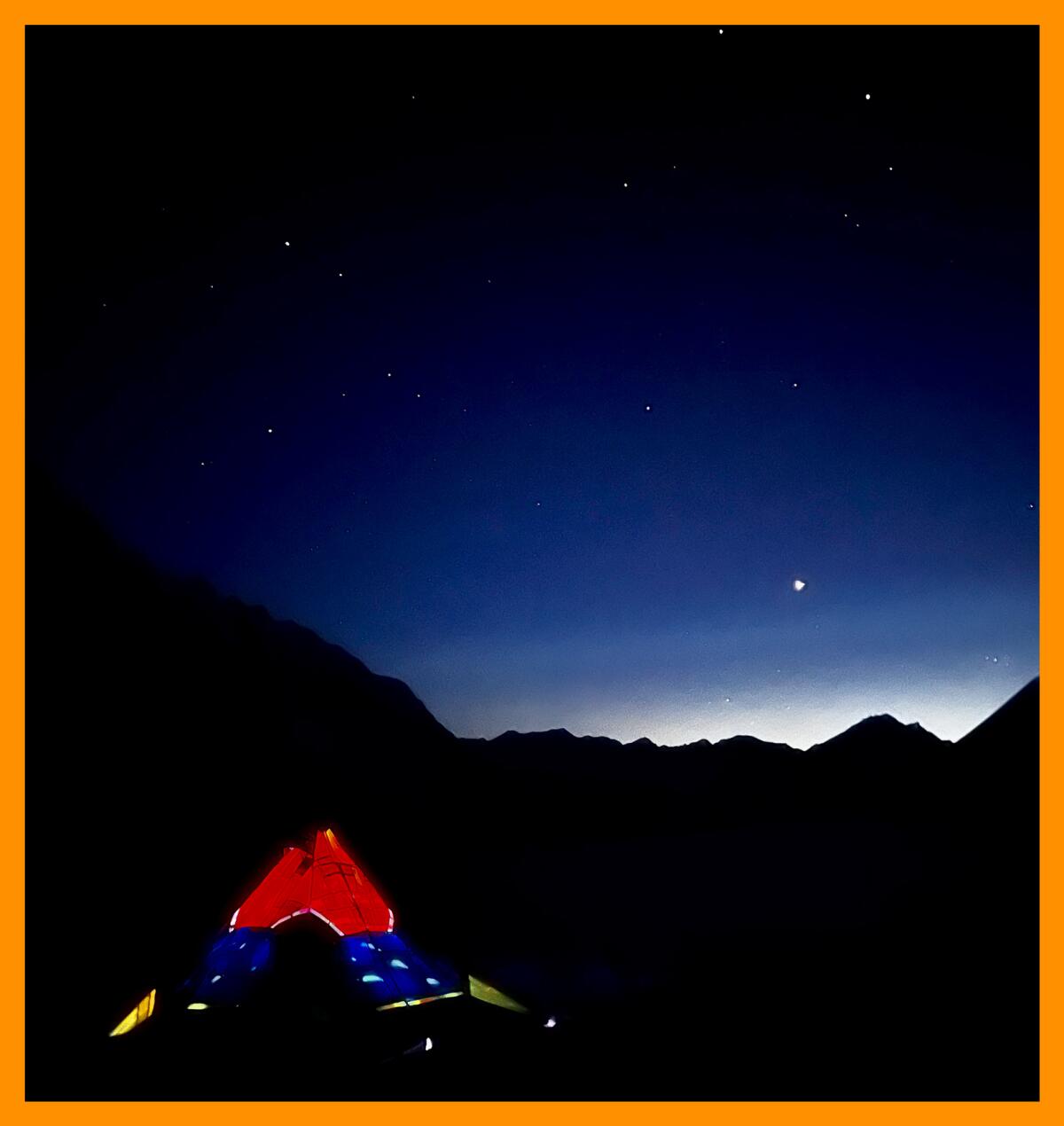
“The ultimate way to protect the environment is to lobby interests and have governmental change,” Parker says. “For those who recreate in the outdoors, it’s part of our responsibility to protect the outdoors that we love so much. It’s a big learning process because as professional athletes, we’re traveling and consuming and selling products.”
3 things to do

1. Roll through South L.A. for Juneteenth. Jog, walk, bike, skate, skateboard or otherwise roll yourself along a five-mile stretch of Vermont Avenue from 9 a.m. to 4 p.m. on June 18 for the Juneteenth edition of CicLAvia, which shuts down streets so pedestrians and riders can enjoy the space. This special event will feature the third Juneteenth Celebration and Resource Fair, which will provide performances, food trucks, activities and access to community and county services, including COVID-19 vaccines and info on tenant protections and immigration rights. Since CicLAvia is not a race, there’s no starting point or finish line: Begin and end wherever you’d like. Helmets are encouraged. Class 1 e-bikes with pedal-assist are allowed; Class 2 e-bikes are allowed only when their throttle is powered off; and Class 3 e-bikes are allowed only when pedal-assist is powered off.
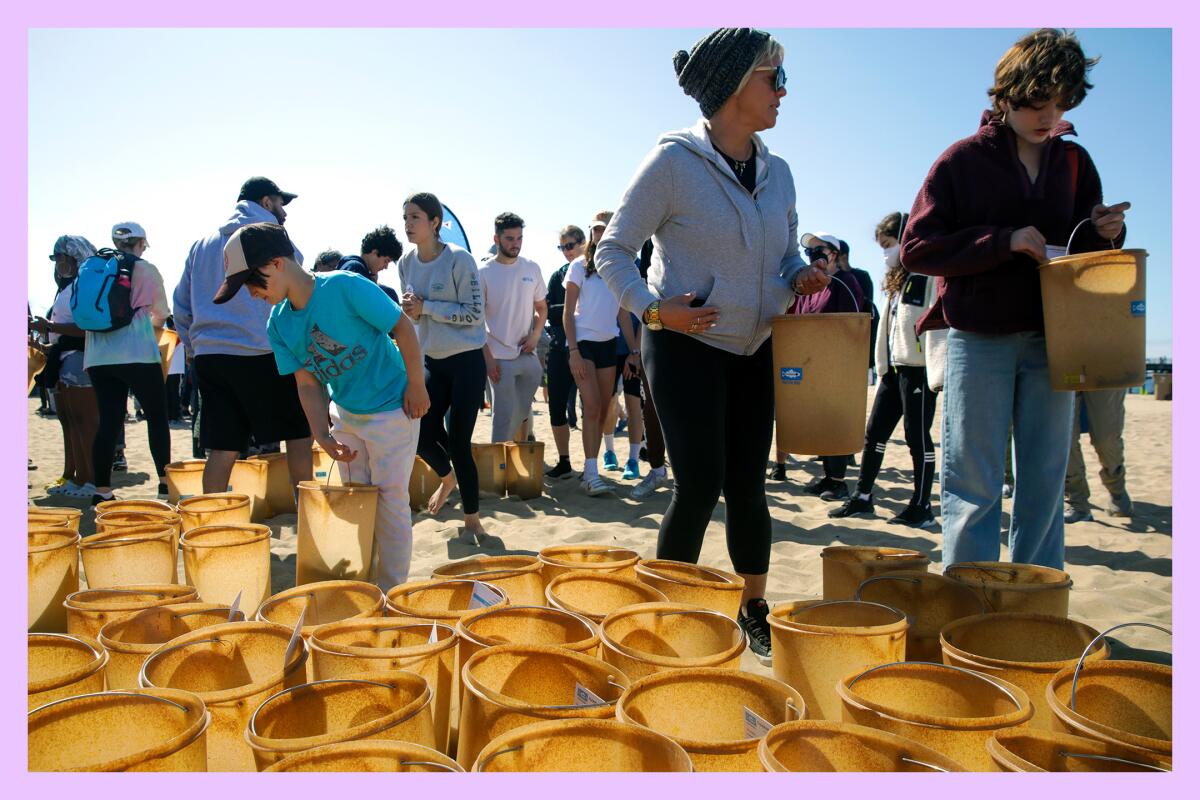
2. Kick off Pride with a scenic cleanup. RSVP here to join LA Waterkeeper and model and actor Tatchi Ringsby in the first ever Beach Haven event, an LGBTQ+ safe space and beach cleanup for World Oceans Day and Pride Month. You’ll clear trash and debris from Santa Monica Beach, removing plastic from the sand while making new connections with like-minded folks. The cleanup runs from 10 a.m. to 1:30 p.m. on June 9 at Santa Monica Beach. Meet at 10 a.m. at Tower 20 at 2030 Ocean Ave., then join the after-party (21 and over only) from 12 p.m. to 1:30 p.m. at JuneShine at 2914 Main St. in Santa Monica. For more info, email Kelly Shannon McNeill at kelly@lawaterkeeper.org.
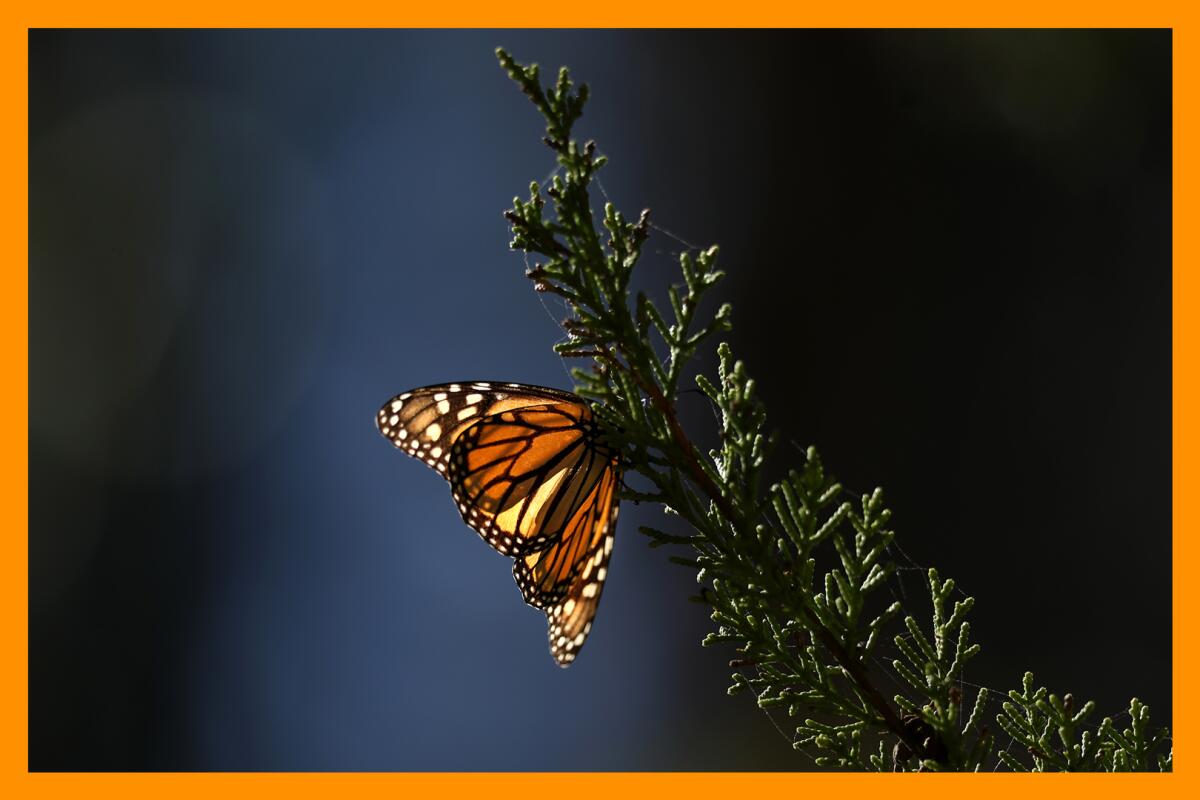
Bring your binoculars to spot the butterflies of San Gabriel Canyon (including Western monarchs).
3. ID butterflies in the San Gabriel Mountains. On June 10 from 8 a.m. to 1 p.m., 25 lucky hikers will be selected by random lottery to join Pasadena Audubon’s free expedition to identify various local butterflies. Bring your binoculars to spot these warm-weather friends of San Gabriel Canyon, joining trip leaders Dan Cooper and Luke Tiller to bask in the beauties of Western monarchs, painted ladies, cloudless sulphurs, tiger swallowtails, gray hairstreaks, mourning cloaks and Western pygmy blues. Visit the Pasadena Audubon website to sign up for the lottery.
The must-read
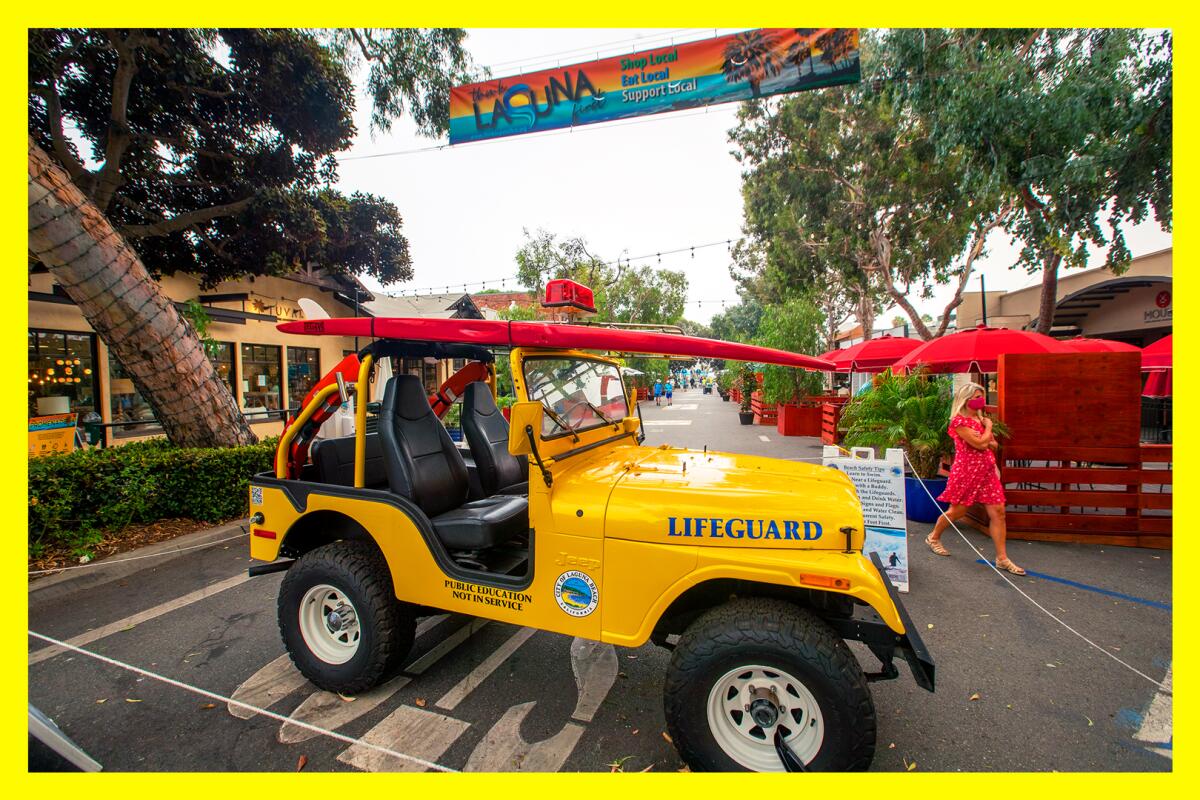
If you’re looking to throw a block party this summer, look no further. Our instructional by Karen Garcia has all the do’s and don’ts for hanging out with your neighbors and celebrating with your community. Most permits — and you do need one to have a block party — come with a fee; in L.A., it’s $528, and you’ll need to apply at least 45 days in advance. You’ll also need to obtain barricades to block out traffic (in L.A., contact the special events office; in other cities, like Long Beach, you may need to use one of the city’s approved vendors), and in many cases, you’ll even need event liability insurance.
So is it all worth it? Yes, if you feel strongly about gathering your neighbors in the street for a good reason. That reason could be charity or fundraising, or maybe it’s the simple joy of eating good food outdoors with your neighbors on your block. Unfortunately, if you’re in Cudahy, Downey, Glendora, Lancaster, Rolling Hills, Santa Clarita, Santa Fe Springs, Walnut or West Hollywood, you’re out of luck — these cities don’t allow block parties.
Happy adventuring,

P.S.
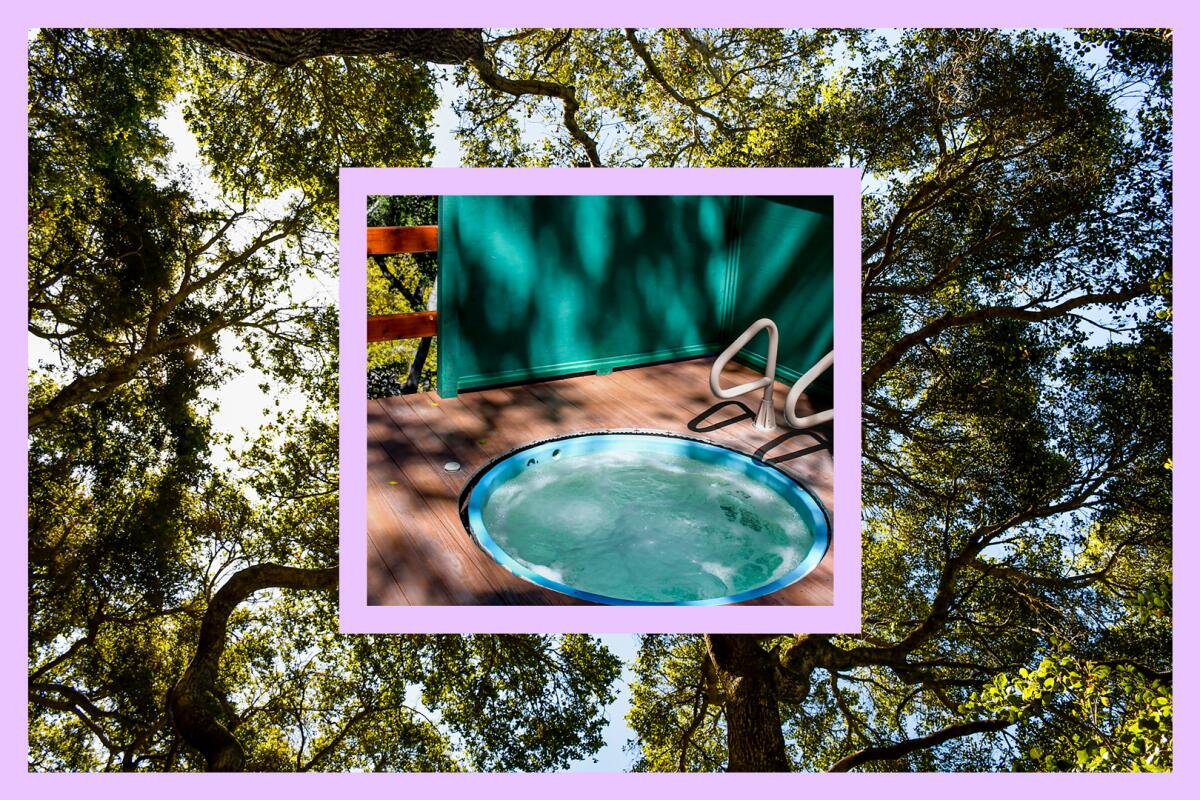
Are you exhausted from the events of Memorial Day weekend? Consider a solo soak at a hot spring. There are relaxing spots aplenty in L.A., but there’s something about being in the forest, staring up at the trees while soaking, that takes rejuvenation to another level. Most recently, I visited Sycamore Mineral Springs Resort & Spa in San Luis Obispo, where your choice of 24 open-air hillside hot tubs (man-made, but filled with naturally heated mineral spring water) will let you forest-bathe and soak simultaneously. A privacy screen allows you to unwind in solitude; the only thing I heard was birds chirping, and, true to the resort’s name, there was indeed a Western sycamore waving its leaves gently above my hot tub.
Prices are also relatively reasonable, at $23 per person per hour from Monday to Thursday, and $28 per person per hour on Fridays, Saturdays and Sundays. Towel rental is $3 (of course, you can bring your own too). I just went for a two-hour soak, but you can also buy a spa package where you add on yoga, pilates, a facial or a massage. If you need two days of soaking to regain your humanity, stay the night at the resort. You can also bring your pup to the resort and its Gardens of Avila restaurant — both are dog-friendly.
For more insider tips on Southern California’s beaches, trails and parks, check out past editions of The Wild. And to view this newsletter in your browser, click here.
Sign up for The Wild
We’ll help you find the best places to hike, bike and run, as well as the perfect silent spots for meditation and yoga.
You may occasionally receive promotional content from the Los Angeles Times.



